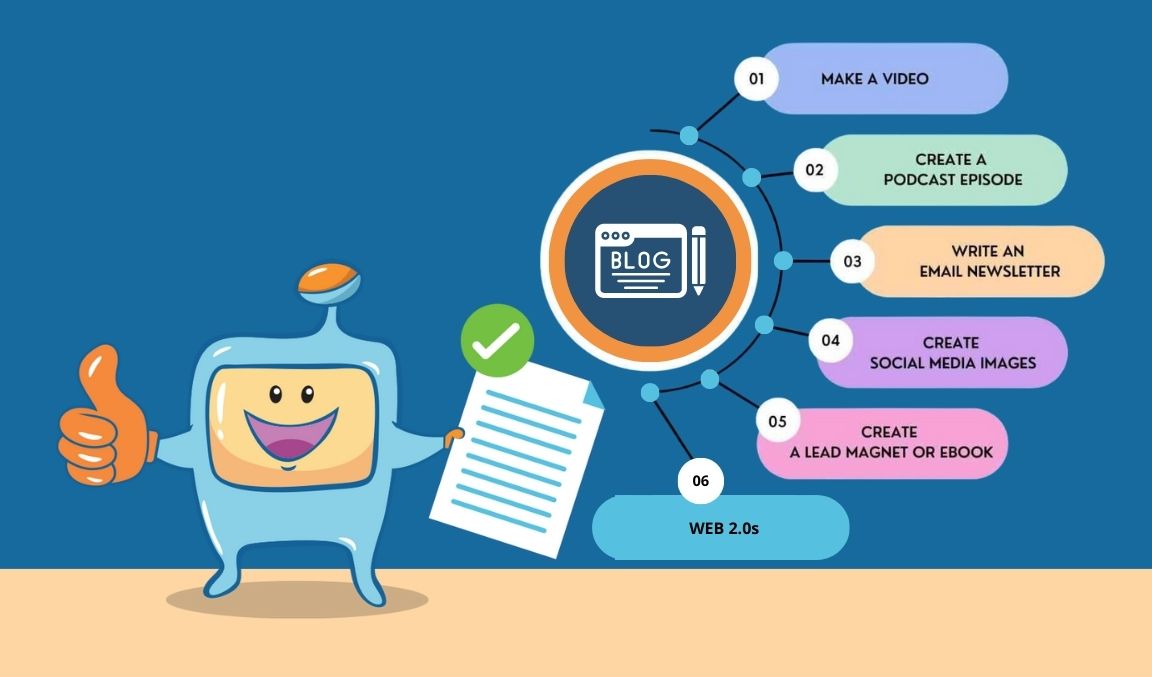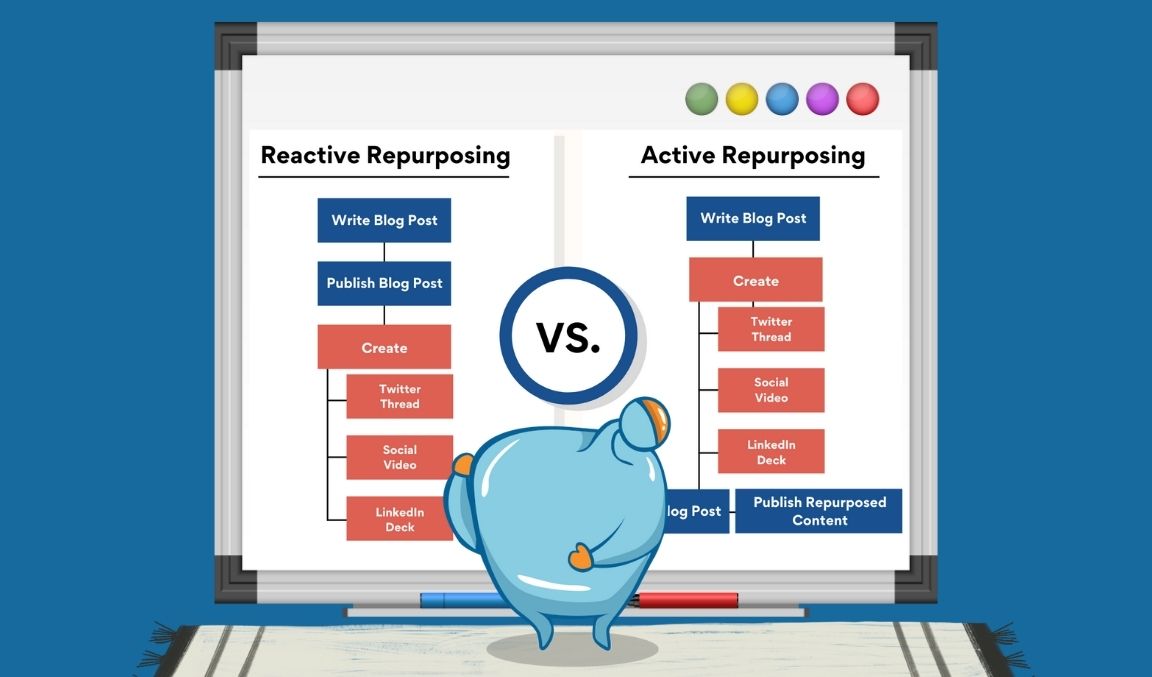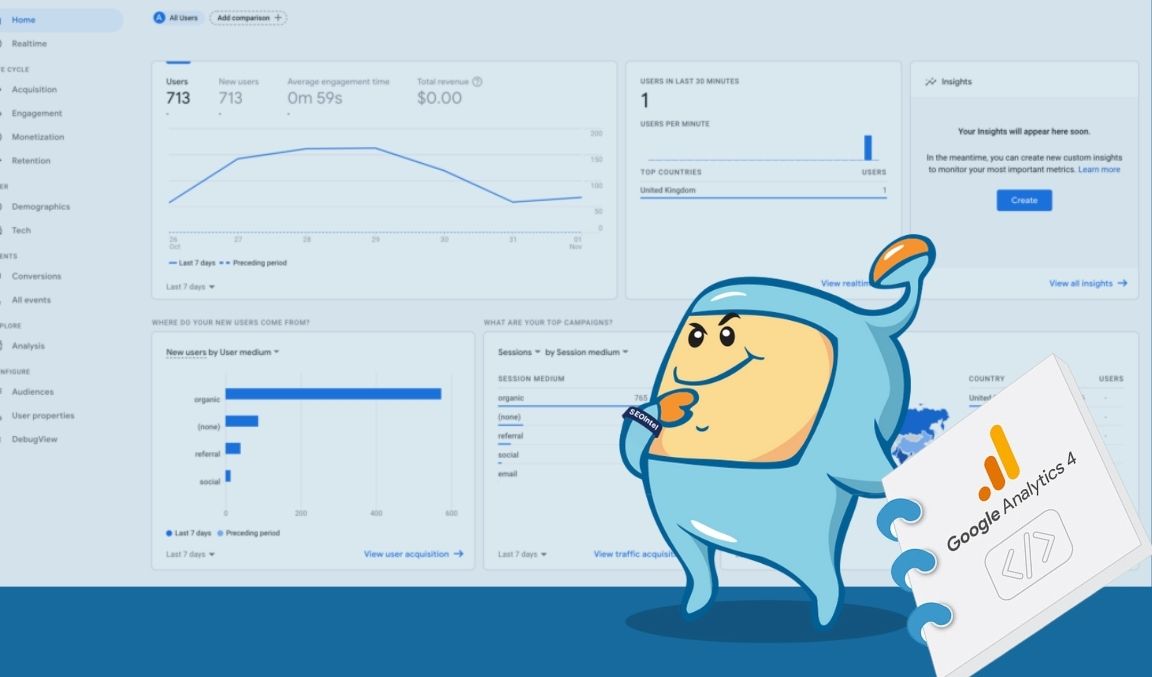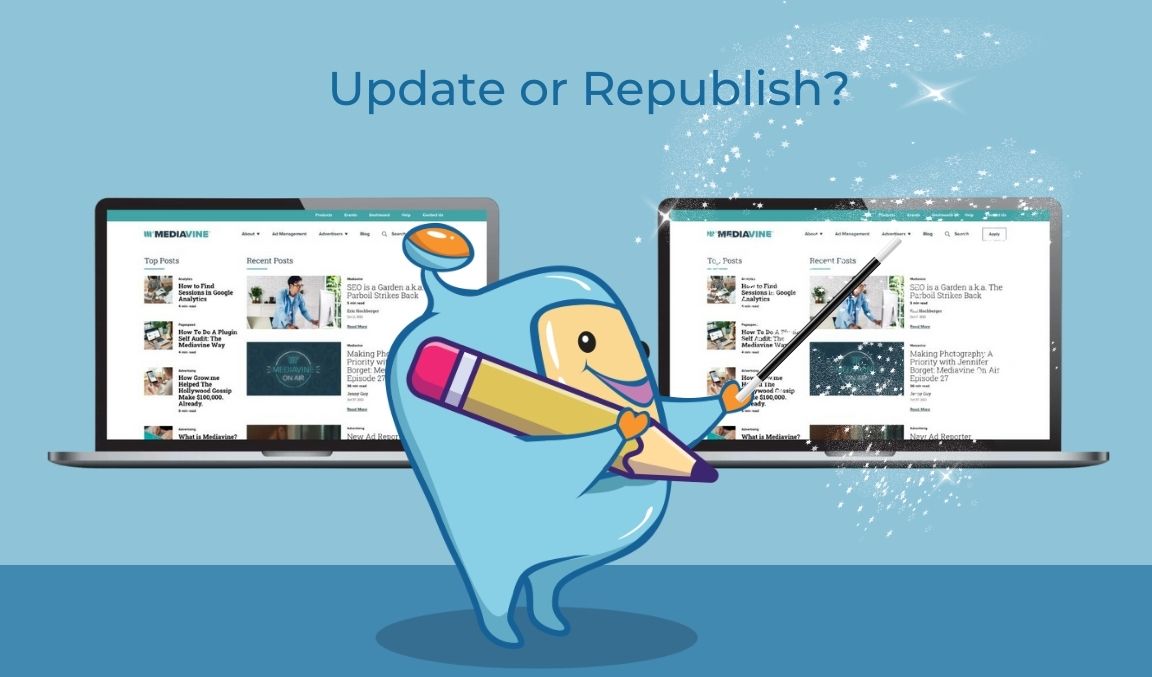Repurposing content has become an essential strategy in the world of content marketing.
As content creators, we invest a significant amount of time and effort in crafting valuable and engaging content.
However, often that content remains confined to a single format or platform, limiting its reach and potential impact.
That's where the power of repurposing comes into play.
Repurposing content involves taking existing content and transforming it into different formats, such as videos, infographics, podcasts, or social media posts.
By repackaging and repurposing our content, we can extend its lifespan, reach a wider audience, and extract more value from our creative efforts.
In this article, we will explore the importance of content repurposing, best practices to effectively repurpose content, and how to make the most of this strategy to expand the reach and engagement of our content.
Here is what you will read in this article:

Repurposing content (also known as "content recycling") is the practice of reusing all or elements of existing content in order to expand that content's reach.
Repurposed content is typically transformed into a new format (for example, turning a blog post into an infographic).

Content repurposing is important for several reasons:

To ensure effective content repurposing, it is important to use the following best practices to optimize the process and maximize the impact of repurposed content:

When repurposing content, it's recommended to focus on evergreen content.
Evergreen content is timeless and remains relevant over an extended period.
Look for blog posts or articles on your website that have proven to be popular and have maintained their value over time.
These evergreen pieces can serve as a solid foundation for repurposing.

Use Google Analytics to identify landing pages that generate significant traffic and resonate with your audience.
These pages are prime candidates for repurposing, as they have already proven their appeal and relevance to your target audience.
Similarly, analyze your YouTube videos' performance using YouTube Analytics.
Identify the videos that have gained traction and attracted views and engagement.
These successful videos can be repurposed into other formats, such as blog posts or podcast episodes.
Review your blog feed post by post to identify evergreen content that is still relevant today.
Update and refresh these posts if necessary before repurposing them into different formats.
When repurposing content, it's crucial to adapt the content to each specific format.
Each medium has its own requirements and audience preferences.
For example, a blog post may need to be condensed and transformed into a visually engaging video, while a podcast episode may require additional narration and storytelling elements.
Tailor your repurposed content to suit the format and captivate the audience effectively.
Another effective repurposing strategy is to break up your content into smaller pieces and share them on social media platforms.
Extract key insights, tips, or quotes from your existing content and create bite-sized posts, videos, or tweets.
By doing so, you can maximize the reach of your content and engage with your audience on various platforms.
This approach also allows you to provide quick, digestible content that captures attention and encourages further exploration.
Visual content is highly engaging and shareable.
Take advantage of your existing text-based content and transform it into visually appealing formats such as infographics, images, or slideshows.
By repurposing your content visually, you can attract new audiences and increase the overall visibility of your message.
Visual content has the power to convey information more effectively and make a lasting impact on viewers.
Don't hesitate to reuse certain elements, tips, or strategies across different pieces of content.
If a particular technique or approach is effective, you can incorporate it into multiple articles, videos, or podcast episodes.
However, ensure that each piece of content provides unique value and offers fresh perspectives or examples to avoid repetition.
By repurposing successful elements, you can reinforce key messages and maintain consistency across your content ecosystem.
Repurposing content is a fantastic strategy to scale up your guest posting efforts.
Instead of simply rehashing the same content, take an existing strategy or topic that you've covered and use it as a foundation for your guest post.
Craft a unique piece that offers fresh insights, new examples, and different perspectives.
Bloggers are more likely to accept your guest post if it brings something valuable and unique to their audience.
For instance, if you previously wrote about "The Skyscraper Technique" on your blog, you can adapt and expand upon it for a guest post on another website.
Present the technique in a new light, provide additional case studies, share exclusive tips, and offer your unique perspective on its effectiveness.
By customizing the content for the guest post, you ensure that it adds value and stands out as a distinct piece.

Republishing your existing content on platforms like LinkedIn Articles and Medium.com can give your content extra exposure.
While republishing may not yield the same results as creating new content, it allows you to reach a different audience and increase visibility.
Republishing is a simple and quick way to extend the lifespan of your content and attract new readers.
Consider optimizing your republished content to align with the platform's requirements and audience preferences.
By following these best practices, you can effectively repurpose your content, expand its reach, and maximize its impact across different formats and platforms.
The key is to be creative, strategic, and mindful of your audience's preferences and needs.
Repurposing content is a powerful technique that allows us to maximize the value and impact of our content assets.
By repackaging our existing content into different formats and platforms, we can extend its lifespan, reach new audiences, and engage with our target market in fresh and innovative ways.
Repurposing content not only saves time and resources but also enhances our content marketing strategy by leveraging the strengths of various mediums.
Whether it's transforming a blog post into an engaging video, republishing content on different platforms, or breaking down long-form content into bite-sized pieces for social media, repurposing enables us to amplify our message and achieve greater visibility and influence.
By adopting best practices and being creative in our approach, we can unlock the full potential of our content library and create a strong and cohesive content ecosystem that resonates with our audience.
So, let's embrace the power of repurposing and make the most of our valuable content resources to drive meaningful engagement, expand our reach, and achieve our content marketing goals.